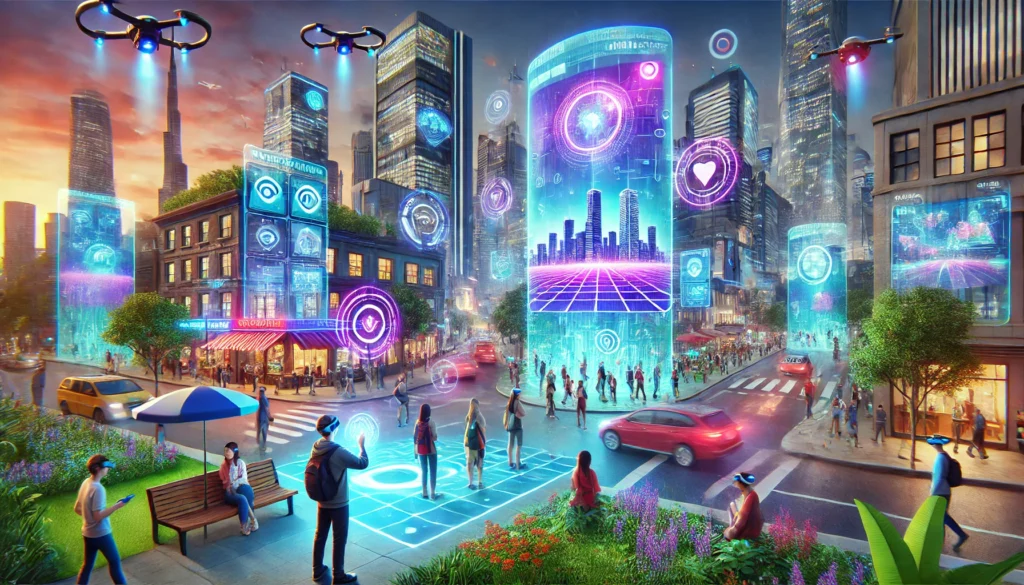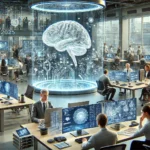Understanding Augmented Reality (AR)
What is Augmented Reality?
Augmented Reality (AR) is a transformative technology that overlays digital elements like graphics, sounds, or videos onto the physical world in real-time. This is different from Virtual Reality (VR), which immerses users in a completely virtual environment, and Mixed Reality (MR), which blends both physical and digital worlds. AR allows us to interact with both the physical world and digital objects simultaneously.
Why is AR Important in Modern Technology?
AR has become a pivotal technology in diverse industries, from entertainment to healthcare. As AR technology evolves, it seamlessly integrates with other innovative technologies like Artificial Intelligence (AI), the Internet of Things (IoT), and the upcoming 5G networks. This integration is paving the way for smarter, more interactive experiences that are shaping the future of how we engage with technology.
Purpose of the Article
This article explores how Augmented Reality acts as the intersection of innovation (technological advancement) and interaction (human engagement). We’ll delve into how AR is revolutionizing industries, changing user experiences, and fostering collaboration across various fields.
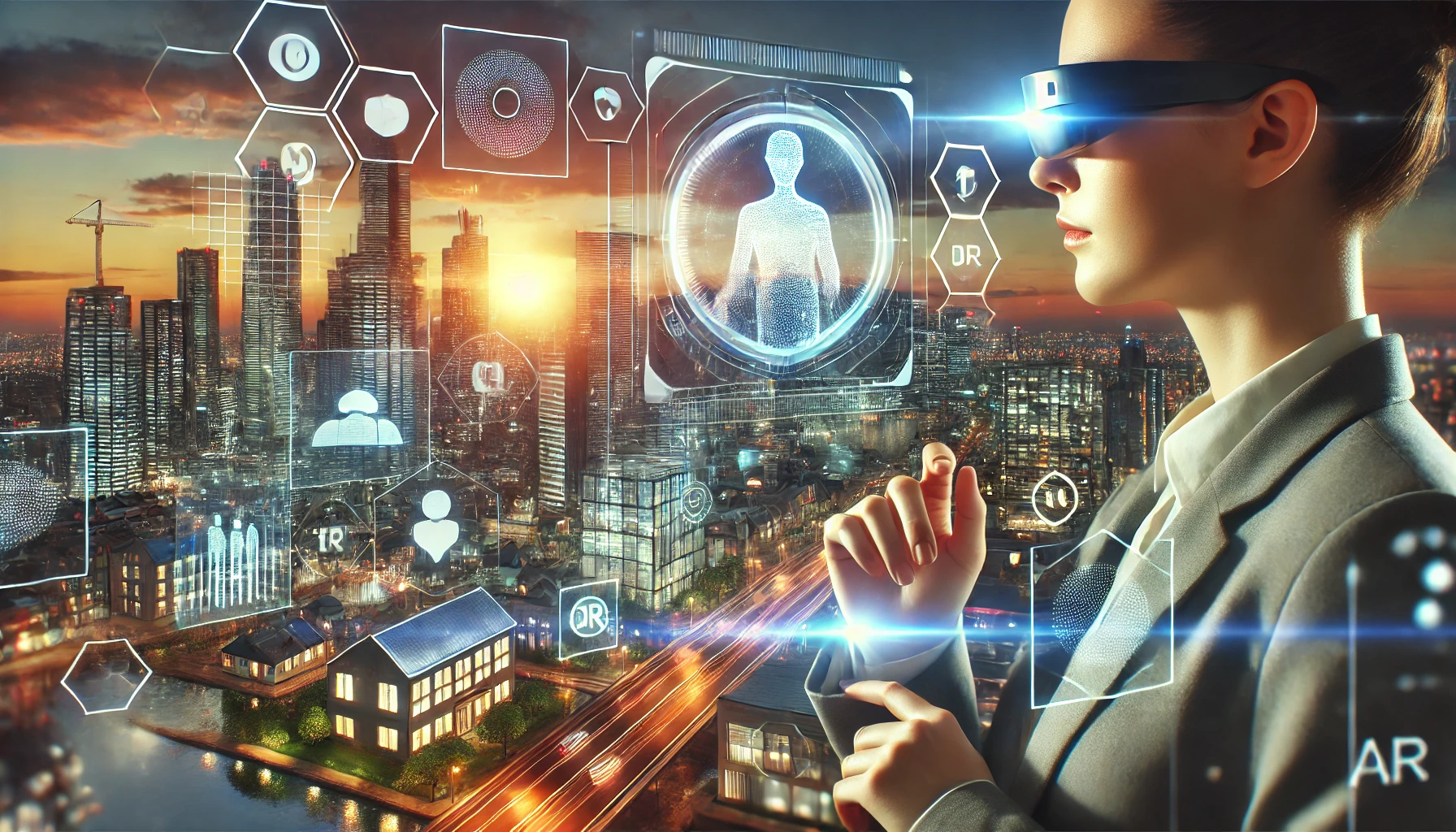
The Role of Augmented Reality in Driving Innovation
Innovative Applications in Various Industries
Healthcare
AR is transforming the healthcare sector with applications like surgical simulations, patient monitoring, and medical training. Surgeons can now practice complex procedures virtually before operating on patients, while medical trainees engage in immersive, hands-on learning experiences.
Education
In education, AR is creating interactive, immersive learning environments. Students can go on virtual field trips, explore historical landmarks, or even conduct experiments in virtual labs—all from their classrooms or homes.
Retail
The retail industry is embracing AR with virtual try-ons, allowing customers to try on clothes or accessories virtually before purchasing. AR is also enhancing shopping experiences by enabling product visualizations in customers’ living rooms, providing a more interactive approach to online shopping.
Automotive
In the automotive world, AR is being integrated into dashboards, offering drivers navigation directions, safety alerts, and real-time data without taking their eyes off the road.
Entertainment and Gaming
Games like Pokémon Go are prime examples of how AR merges digital gameplay with the real world. Beyond gaming, AR is also revolutionizing entertainment by offering immersive experiences such as virtual concerts and live-event interactions.
AR as a Tool for Creative Development
Augmented Reality fosters creativity by enabling new forms of digital art, storytelling, and interactive media. Designers, architects, and product developers use AR to create prototypes, collaborate with others in real-time, and visualize designs before building physical prototypes.
Collaborative Innovation with AR
AR enhances collaborative innovation by allowing teams to work together from different locations. Remote workers can participate in virtual meetings, while engineers can collaborate on product designs and prototypes using AR-based tools.
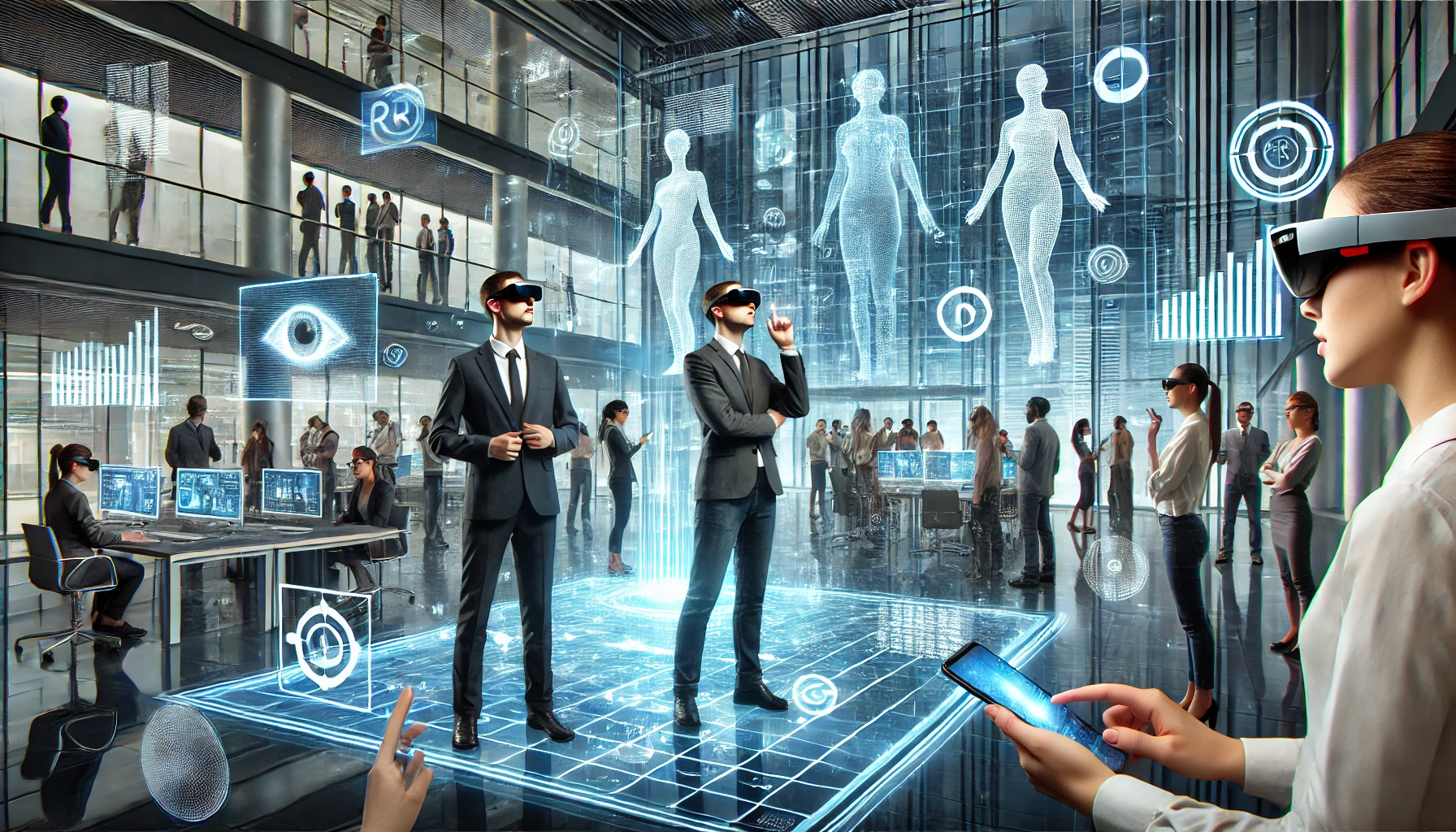
The Impact of Augmented Reality on Interaction
Redefining Human-Technology Interaction with AR
AR is reshaping how we interact with technology. Traditional interfaces, like touchscreens or keyboards, are being replaced with more natural forms of engagement, such as gesture-based controls, voice commands, and eye-tracking technologies. This shift toward intuitive, immersive interactions makes technology feel more organic and connected to our daily lives.
Augmented Reality and Social Interaction
AR in Social Media
Social media platforms are enhancing user experiences with AR filters, letting people transform their appearance or surroundings in real-time. This boosts user engagement, as social media users increasingly share AR-enhanced content.
Connecting People in Physical and Virtual Spaces
AR creates spaces where people can interact with each other in both physical and digital environments. For instance, AR apps allow individuals to share virtual spaces, such as playing a game together in real-time or attending virtual concerts with friends.
Personalization and Immersion through AR
AR’s ability to personalize experiences is a game-changer. Retailers can use AR to offer personalized shopping experiences, while apps like Google Maps deliver real-time, location-based information. In gaming and entertainment, AR offers context-aware experiences that immerse users in rich, interactive environments.
Human-Machine Collaboration with AR
The future of human-machine interaction is evolving, with AR making it possible to engage with machines in a more intuitive manner. From smart glasses to AR assistants and robots, this technology allows us to operate machines and devices through natural interfaces—whether it’s voice commands or gesture controls.
Challenges at the Intersection of Innovation and Interaction
Technical Limitations of AR
Despite its potential, AR faces technical challenges. The hardware required for AR, such as headsets and smart glasses, still has limitations in terms of size, battery life, and processing power. Additionally, tracking accuracy and latency issues can impact the seamlessness of AR experiences.
Privacy and Ethical Considerations
As AR becomes more integrated into daily life, privacy concerns rise. AR devices often collect personal data, such as location and behavior, raising questions about data security. Ethical dilemmas also emerge around surveillance and security risks in public spaces using AR technology.
User Adoption and Accessibility
For AR to reach its full potential, it must be widely adopted by users. The user experience plays a significant role in this process, and the technology must be accessible to people of all abilities. Making AR inclusive for individuals with disabilities—whether visual, auditory, or mobility-related—is a crucial challenge.
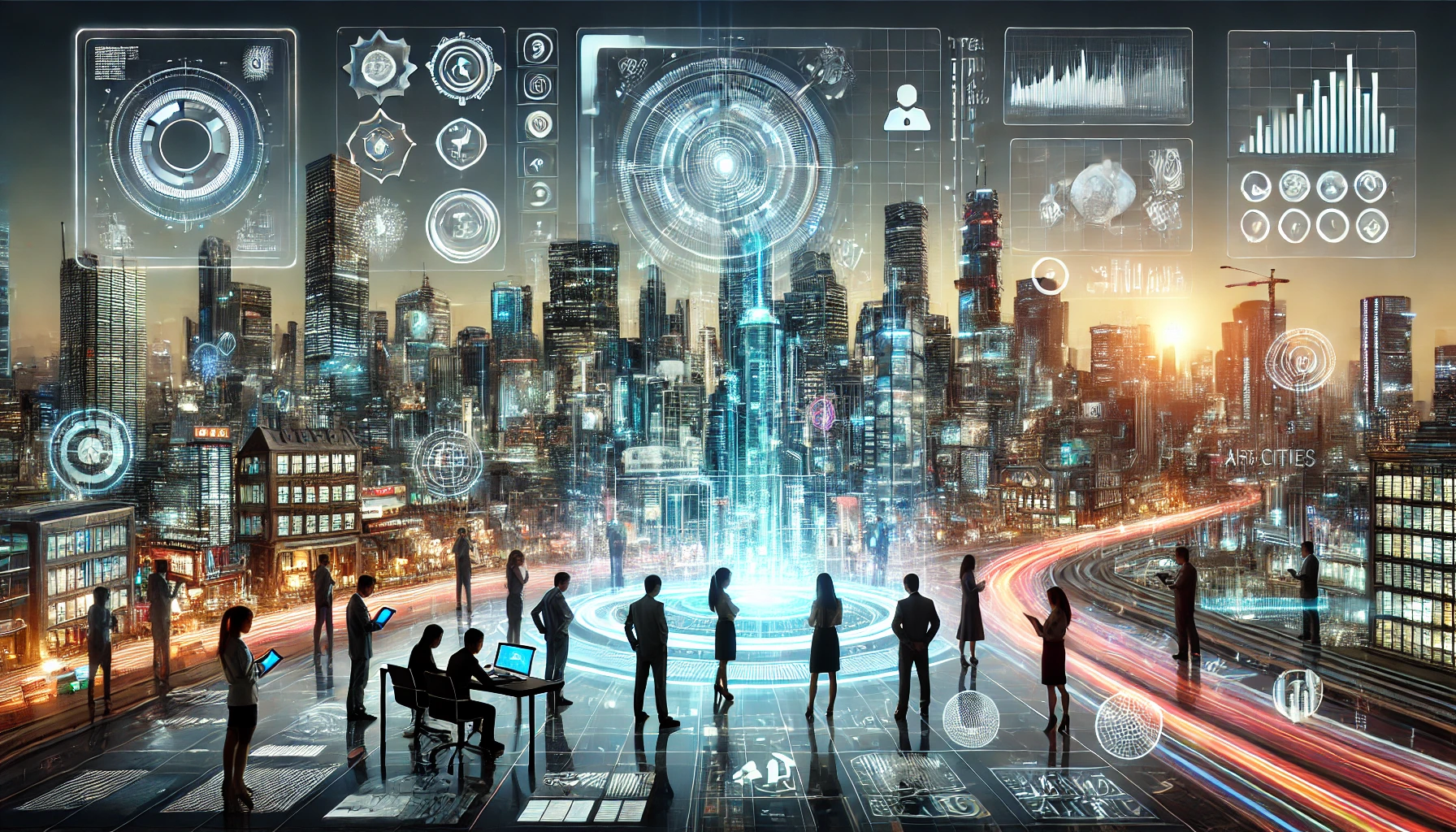
Future Prospects: The Next Evolution of Augmented Reality
Advances in AR Hardware
Looking ahead, we can expect more sophisticated AR devices. Smart glasses, contact lenses, and AR headsets will become more compact, affordable, and capable of offering longer battery life. Wearable AR devices will make experiences even more seamless, paving the way for fully integrated, hands-free AR interactions.
AR Integration with Emerging Technologies
The future of AR lies in its integration with technologies like AI, IoT, and 5G. These will enhance AR’s capabilities, making it more intelligent, connected, and efficient. For instance, 5G networks will enable faster data transfer, ensuring AR applications run smoothly and with minimal latency.
Augmented Reality and the Metaverse
AR is a key component of the evolving metaverse—a virtual space that blends the digital and physical worlds. As the metaverse grows, AR will enable rich, interactive environments where users can socialize, play games, shop, and work. The potential of AR in creating immersive experiences in the metaverse is immense.
Societal Impact of AR
Over the next decade, AR is poised to revolutionize daily life. From AR-driven education systems to smart cities and enhanced tourism, the societal impacts of AR will be profound. As AR becomes more embedded in our daily routines, it will shape social norms, work practices, and cultural behaviors.
Conclusion: Embracing the Future of Augmented Reality
Summary of Key Points
AR is a powerful tool that bridges the gap between innovation and interaction. From transforming industries like healthcare and education to reshaping social media and gaming, AR is paving the way for a more interactive, immersive world.
Looking Forward
As AR continues to evolve, its potential to revolutionize how we interact with technology, people, and our environment is limitless. We are only scratching the surface of its full capabilities.
Final Reflection
The intersection of innovation and human interaction through AR is a dynamic space, one that promises to change the way we live, work, and play. By embracing this technology, we are opening the doors to endless possibilities for both personal and professional growth.
(FAQs)
1. What industries are using Augmented Reality?
- Healthcare: Surgical simulations and patient care.
- Retail: Virtual try-ons and product visualizations.
- Education: Interactive learning and virtual labs.
- Gaming and Entertainment: Immersive gaming experiences and virtual concerts.
2. How does Augmented Reality improve user interaction?
- AR provides immersive, intuitive experiences, replacing traditional interfaces like screens with more natural forms of interaction such as gestures, voice commands, and real-time data overlays.
3. What are the challenges of Augmented Reality technology?
- Technical limitations: Issues with hardware size, battery life, and processing power.
- Privacy concerns: AR devices often collect personal data, raising security and ethical issues.
- User adoption: AR must be accessible and offer seamless experiences to encourage widespread adoption.
4. How is AR used in social media?
- AR is widely used in social media through filters that allow users to modify their appearance or environment in real-time. It also enables interactive, shareable experiences at live events and virtual gatherings.
5. What does the future of Augmented Reality look like?
- The future of AR will see advancements in hardware, increased integration with AI and IoT, and the rise of the metaverse. AR is expected to play a central role in shaping the next generation of immersive, connected experiences.

